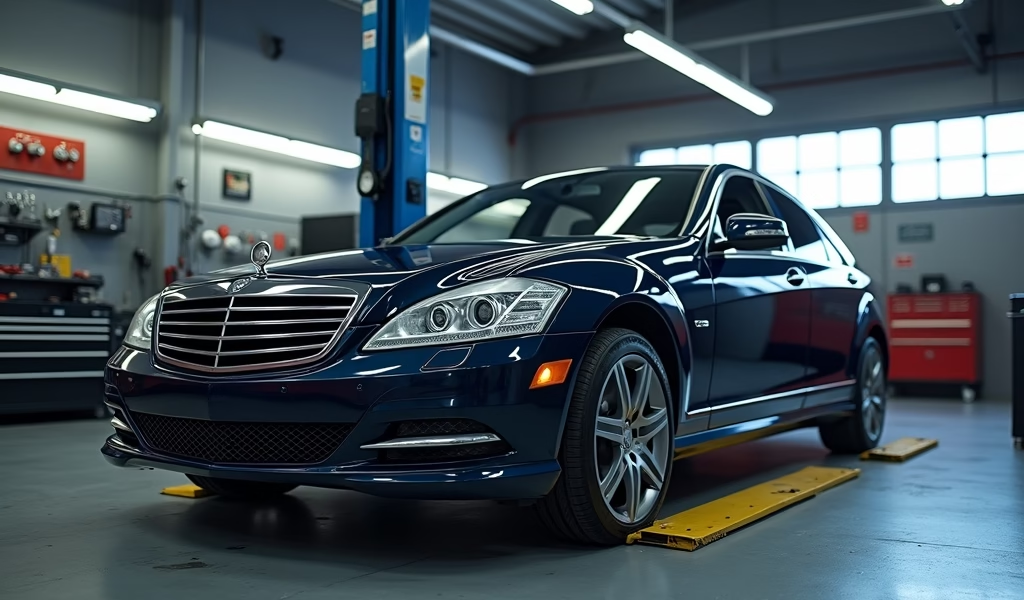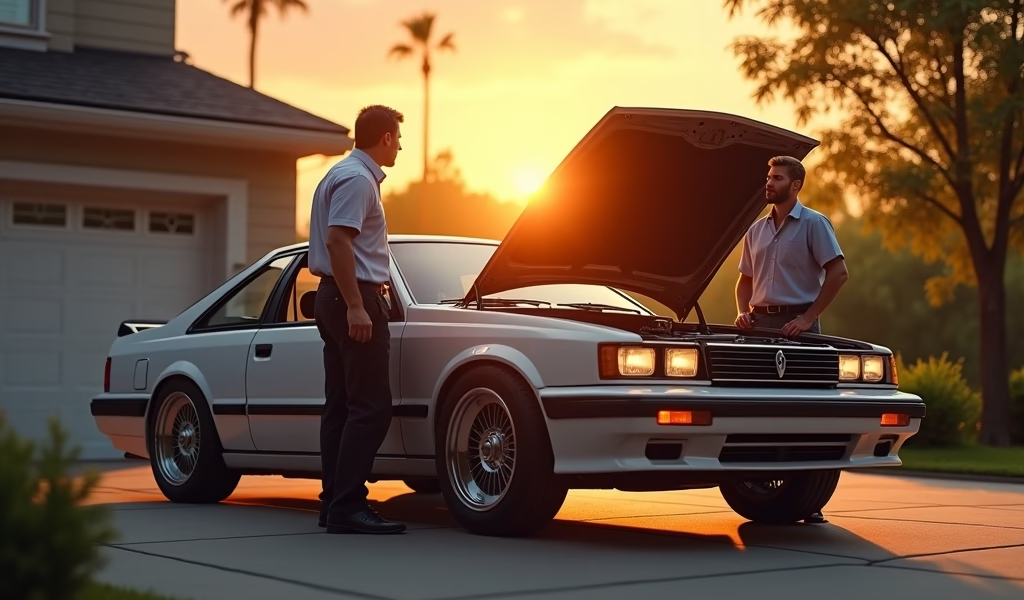Overview
This guide provides essential strategies for used car buyers, including researching vehicle history, conducting thorough inspections, getting professional evaluations, and negotiating effectively based on facts rather than emotions. The article emphasizes that patience and proper due diligence—including checking for accident history, test driving under various conditions, and understanding financing options—can save buyers thousands in unexpected repairs and help them find reliable transportation at a fair price.
Table of Contents
- Understanding the Used Car Market
- Research Before You Shop
- Vehicle History Reports
- Inspecting the Vehicle
- Test Drive Essentials
- Professional Inspection
- Negotiation Strategies
- Paperwork and Legal Protection
- Financing Considerations
- Conclusion
- Frequently Asked Questions
Understanding the Used Car Market
Let’s face it—buying a used car can feel like navigating a minefield. As a mechanic who’s seen countless folks drive away in lemons that could have been avoided, I want to help you protect yourself in this complex marketplace.
The used car market has evolved dramatically in recent years. In 2023, over 39.3 million used vehicles changed hands in the U.S., according to Cox Automotive’s market analysis. What’s more concerning is that approximately 1 in 5 buyers experience significant issues within the first year of ownership.
While buying used offers substantial savings—with the average new car now exceeding $48,000—it requires a strategic approach. The price gap between new and used vehicles has narrowed since the pandemic, with used car prices still about 30% higher than pre-pandemic levels, though they’ve decreased 8.2% year-over-year according to the Manheim Used Vehicle Value Index.
Think of this guide as your roadmap to navigate potential pitfalls. I’ve helped countless customers avoid expensive mistakes, and the tips I’m sharing have saved my clients thousands in unexpected repairs.
Research Before You Shop
Before setting foot on a dealer lot or browsing online listings, arm yourself with knowledge. Many buyers get so caught up in the excitement of car shopping that they skip this crucial step.
Start by establishing a realistic budget that extends beyond the purchase price. According to J.D. Power, the average used car buyer spent approximately $28,500 in 2023. Factor in:
- Monthly payments (if financing)
- Insurance costs (get quotes beforehand)
- Expected maintenance expenses
- Fuel economy
- Registration fees and taxes
Next, research reliable makes and models that fit your needs. Not all vehicles age equally. Consumer Reports’ 2023 reliability studies consistently rank Toyota, Lexus, and Mazda at the top for used car dependability. Honda maintains strong positions with the Civic and Accord showing excellent long-term durability. Interestingly, Mazda has climbed significantly in reliability rankings, offering a sweet spot of driving enjoyment and mechanical soundness.
Understanding fair market value is your compass during negotiations. Resources like Kelley Blue Book, Edmunds, and NADA Guides provide pricing based on condition, mileage, location, and features. I’ve seen too many folks overpay simply because they didn’t know the market value of their target vehicle.

Vehicle History Reports
If there’s one step you shouldn’t skip, it’s pulling a vehicle history report. Think of it as a background check for your potential automotive partner.
These reports reveal critical information about:
- Accident history and damage severity
- Title problems (salvage, flood, or fire damage)
- Odometer discrepancies
- Maintenance and service records
- Previous ownership history
- Open recalls
According to Carfax data, more than 20% of vehicles on the road have some type of reported incident that can affect their value and safety. I’ve seen countless cases where these reports saved buyers from making expensive mistakes.
The two major players in vehicle history reports are:
Carfax: The most recognized service, drawing from over 100,000 data sources. A single report costs around $40, with discounts for multiple reports.
AutoCheck: Owned by Experian, offering similar information with a unique scoring system for comparing vehicles against similar models. Typically less expensive than Carfax, starting around $25.
Many dealerships provide these reports for free. When buying from private sellers, this modest investment becomes your insurance policy against future headaches.
Watch for these red flags in history reports:
- “Title washing” – when a salvage vehicle is re-registered in another state to obtain a clean title
- Odometer discrepancies – digital dashboards haven’t eliminated this fraud, affecting approximately 450,000 vehicles annually
- Multiple owners in a short period – often indicates underlying problems
- Gaps in maintenance records – can forecast future mechanical issues
Inspecting the Vehicle
Even vehicles with clean history reports deserve thorough physical inspection. As we mechanics like to say, “the car will tell you its story if you know how to listen.”
For the exterior, check:
- Body panel alignment and paint consistency (mismatched colors or textures suggest repairs)
- Signs of rust, especially around wheel wells, door edges, and undercarriage
- Window glass integrity and proper sealing
- Tire condition, including tread depth and even wear patterns
For the interior, examine:
- Upholstery condition without excessive wear or stains
- Functional seat adjustments, seatbelts, and safety features
- Working electronics, including climate control and infotainment systems
- Odor (beware of heavy air fresheners masking problems like mold or smoking)
Under the hood, check:
- Engine bay cleanliness and absence of fluid leaks
- Fluid levels and condition (oil should be amber to light brown, not black or milky)
- Battery terminals free of excessive corrosion
- Belts and hoses without cracks or deterioration
Pay special attention to signs of previous accidents, which can affect a vehicle’s structural integrity and value. According to the Insurance Information Institute, vehicles with accident history typically lose 10-30% of their market value compared to accident-free equivalents.
Watch for these indicators of previous damage:
- Mismatched paint shades or texture differences
- Uneven gaps between body panels
- Fresh undercoating that may hide structural repairs
- Doors, hood, or trunk that don’t close properly
Test Drive Essentials
The test drive is where theory meets reality. A 2022 survey by Cars.com found that 49% of used car buyers discovered significant issues during their test drive that weren’t apparent from listings or initial inspections.
Schedule at least 30 minutes for a comprehensive test that includes various driving conditions. I recommend this sequence:
1. Start with a cold engine. Listen carefully during startup—knocks, ticks, or hesitation can indicate serious problems.
2. Test under various conditions:
- City streets for low-speed handling and transmission behavior
- Highways for high-speed stability and engine noise
- Hills for power delivery and transmission shift patterns
- Tight turns to check suspension and steering response
3. Evaluate braking performance:
- Smooth, even stopping power without pulling
- No vibration or pulsation in the pedal (could indicate warped rotors)
- Emergency stop behavior (does ABS engage properly?)
Pay attention to these common red flags:
- Transmission hesitation or rough shifting (potential costly repairs)
- Vehicle pulls to one side (alignment or suspension issues)
- Unusual noises—clunks, rattles, or grinding sounds often precede mechanical failures
- Dashboard warning lights—particularly check engine, ABS, or airbag indicators
Test all features during your drive—climate control, infotainment, power windows, and other electronics. Even seemingly minor issues can be expensive to fix.

Professional Inspection
As a mechanic, I can’t stress this enough: get an independent inspection before purchasing. This typically costs $100-$200—a fraction of potential repair costs for undiscovered issues.
A professional pre-purchase inspection typically includes:
- Computer diagnostic scan for error codes (including pending codes)
- Undercarriage examination for structural integrity and leak detection
- Fluid analysis for contamination or signs of internal issues
- Compression testing for engine health
- Electrical system evaluation
- Emissions system verification
According to a 2023 AAA survey, buyers who invested in pre-purchase inspections saved an average of $840 in unexpected repairs during their first year of ownership. I’ve personally seen cases where inspections revealed hidden damage that would have cost thousands to repair.
For an unbiased assessment:
- Ask friends or family for mechanic recommendations
- Check online reviews for local shops
- Look for ASE-certified technicians
- Consider make-specific specialists for particular vehicles
Reputable sellers understand and respect the importance of inspections. If a seller resists or makes excuses, consider this a major warning sign. For private sales, offer these options:
- Meet at the mechanic’s shop
- Arrange for a mobile inspection service
- Offer to leave a deposit while taking the car for inspection
Negotiation Strategies
Armed with research and inspection results, you’re ready to negotiate effectively. According to Autotrader research, buyers who arrive prepared save an average of 10% off asking prices.
Multiple factors influence what constitutes a “fair” price:
- Base value from pricing guides
- Adjustments for better or worse than “average” condition
- Local market factors
- Documented issues requiring repair
Effective negotiation combines psychology and mathematics:
1. Start realistically—beginning too low can shut down negotiations
2. Reference your research—”According to Kelley Blue Book, a fair price for this vehicle in its condition is…”
3. Focus on facts, not emotions—mention specific issues discovered during inspection
4. Be prepared to walk away—emotional detachment is your strongest position
Know when to walk away. Some situations warrant a tactical retreat:
- Seller refuses inspection
- Vehicle has undisclosed serious damage
- Title issues can’t be resolved
- Significant discrepancies in vehicle history
- Seller applies high-pressure tactics
Paperwork and Legal Protection
The paperwork phase may seem tedious, but it’s where many buyers unknowingly surrender their rights. Ensure these documents are in order before payment:
- Clean title (verify the seller’s name matches)
- Bill of sale detailing purchase terms and vehicle condition
- Warranty documentation (if applicable)
- “As-is” documentation (understand what this legally means)
- Maintenance records supporting service history claims
Used car warranty options vary widely:
- Manufacturer’s warranty—may transfer to second owners (verify remaining coverage)
- Dealer warranties—often available on certified pre-owned vehicles
- Third-party warranties—quality varies dramatically; research providers thoroughly
- “As-is” sales—most private sales offer no warranty protection
A 2023 Consumer Reports study found that extended warranties typically cost more than the repairs they cover, with most buyers never recouping their investment. Consider setting aside the warranty cost in a dedicated repair fund instead.
Title transfer requirements vary by state but generally include:
- Properly signed title
- Bill of sale
- Odometer disclosure statement
- Safety or emissions inspection (state-dependent)
- Payment of sales tax and registration fees
Financing Considerations
How you pay for your used car matters as much as what you pay. For private sales, the safest payment methods include:
- Cashier’s checks—more secure than personal checks
- Money orders—for smaller amounts
- In-person bank transfers—some banks offer buyer/seller meeting rooms
Never pay with:
- Wire transfers to unknown parties
- Cryptocurrency
- Cash apps with strangers
The financing landscape contains several pitfalls:
- “Buy here, pay here” dealerships—often charge interest rates exceeding 20%
- Extended loan terms—72+ month loans reduce monthly payments but dramatically increase total cost
- Add-on products—extended warranties, gap insurance, and protection packages are often overpriced
Securing financing before shopping provides several advantages:
- Establishes a firm budget
- Strengthens negotiating position
- Protects against dealer financing markup
- Simplifies the buying process
According to the Consumer Financial Protection Bureau, car buyers who shop for financing save an average of $300 per year on auto loans compared to those who accept dealer-arranged financing.
Conclusion
Buying a used car doesn’t have to be a game of chance. By following this comprehensive protection strategy, you transform what could be a stressful gamble into a calculated decision. The key steps to remember:
- Research thoroughly before shopping
- Obtain comprehensive vehicle history
- Inspect meticulously with your own eyes
- Test drive under various conditions
- Get professional inspection from independent mechanics
- Negotiate based on facts, not emotion
- Verify all paperwork carefully
- Understand financing options before shopping
Patience is your greatest ally in this process. The right car at the right price is worth waiting for, and rushing often leads to costly mistakes. I’ve seen too many folks regret impulse purchases when a better option was just around the corner.
Remember that a used car purchase represents not just transportation but one of your largest investments. Taking the time to protect yourself pays dividends in reliability, safety, and financial security for years to come.
Have you used these strategies when purchasing a used car? What worked best for you? Share your experience in the comments below or reach out with questions—I’m happy to help fellow drivers make informed decisions.
Frequently Asked Questions
How many miles is too many for a used car?
Modern vehicles can reliably reach 200,000+ miles with proper care. Focus on maintenance history and condition rather than mileage alone, as a well-maintained 150,000-mile vehicle often outperforms a neglected 75,000-mile one.
What’s the best time to buy a used car?
October through December typically offers 3-5% better pricing than summer months, according to iSeeCars.com research. End-of-month, end-of-quarter, and holiday weekends often provide additional negotiating leverage.
Should I buy from a dealer or private seller?
Dealers offer some consumer protections and handle paperwork but charge premium pricing. Private sellers generally offer lower prices but provide fewer protections, making your comfort with automotive knowledge the deciding factor.
How can I avoid buying a flood-damaged car?
Check for musty odors, water lines, and rust in unusual places like seat tracks and inside the spare tire well. Always get a vehicle history report, as flood-damaged cars are often moved to different states to hide their history.
Is a certified pre-owned car worth the extra cost?
CPO vehicles undergo detailed inspections and include extended warranties, making them ideal for buyers seeking peace of mind. The 10-15% price premium can be worthwhile for late-model vehicles you plan to keep long-term.

